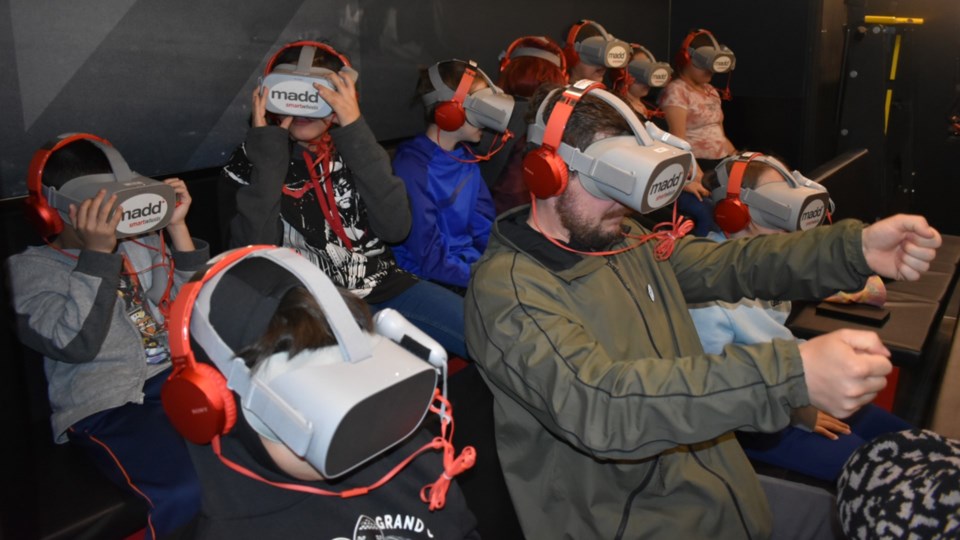KAMSACK — SmartWheels, MADD Canada’s education program for elementary students was at the Kamsack Comprehensive Institute on May 31.
SmartWheels is a specially-outfitted recreational vehicle (RV) that is visiting elementary schools around the province to educate students about the risks associated with alcohol, drugs and driving, said information from MADD (Mothers Against Drunk Driving). SmartWheels is a 42-foot RV with a large projection screen, individual tablets and virtual reality goggles, providing a fully interactive experience for students in Grades 4 to 6.
In it, students learn about the risks of drinking alcohol and taking drugs, the tragic consequences of impaired driving, and the dangers of being a passenger in a car driven by an impaired driver, the information said. The RV seats up to 32 students at a time and can accommodate 150 to 200 students each day.
The vehicle was brought to Kamsack in conjunction with the KCI’s SADD (Students Against Drunk Driving) program, for which Lee Bowes and Wendy Shabatoski are the advisors.
The SADD group meets once every six-day cycle, Bowes said, explaining that the group has made presentations at school assemblies and has participated in the Weed Out the Risk workshop that was designed by MADD.
“We are very excited to take our education program for elementary students to this unique and dynamic new level,” said MADD Canada National President Patricia Hynes-Coates. “SmartWheels educates young students about the dangers of alcohol, drugs and driving before they face making choices about those things. Our mobile classroom inspires young people to make a difference and be the generation that chooses not to drive impaired.”
The SmartWheels presentation was developed by educators with expertise in curriculum development at the elementary school level, the information said. It features videos about the effects of alcohol and cannabis on developing brains and bodies, and on driving abilities. Students use individual tablets to respond to multiple-choice questions about the material and participate in three “choose your own adventure” decision-making scenarios about impaired driving. The outcome of the stories depend on the students’ answers to questions.
During the presentation, students put on their virtual reality goggles and see how it looks and feels to drive while impaired by drugs or alcohol. They also see the personal story of one young victim of impaired driving, who lost two of his best friends in an impaired driving crash when the kids were all about 12-years-old.
At Kamsack, Caitlyn Hawrysh, a specially-trained MADD Canada representative, guided the presentation and helped students through the process.
All participating schools are provided with a comprehensive Educators’ Guide to facilitate pre and post presentation discussion about the material presented and the risks of alcohol and drug use.
Impaired driving takes a disproportionate toll among young Canadians: traffic crashes are the leading cause of death among 16 to 25 year olds with approximately 55 per cent of crashes involving alcohol and/or drugs, it said. Further, studies show that the use of alcohol and cannabis starts as early as age 11 and that use increases steadily between Grades 7 and 9. MADD Canada has created the SmartWheels program to reach youth and educate them about the harms associated with alcohol and drug use before they are at risk.




